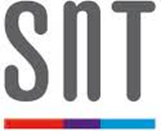
Objectives of the service
The main objectives of the DG-Trac feasibility study were:
- To identify the stakeholders and user needs based on real user scenarios.
- To involve users from the medical and pharmaceutical sector as well as emergency services in the study.
- To design a system and service architecture based on the user needs and requirements and the results of a state of the art analysis taking into account the added value of the use of Satellite Navigation and Satellite Communication services connecting the senders of the dangerous goods, the transporters and the relevant blue forces.
- To evaluate as part of the viability study the economic and non-economic viability aspects of the proposed service(s) and the related system design.
- To show with a proof of concept the principle implementation of such a service and demonstrate the technical feasibility.
- To define a roadmap based on the results of the viability analysis and the proof of concept, how a sustainable service for the tracking and tracing of dangerous medical goods can be established.
Users and their needs
Target users of the DG - Trac service are:
- Hospitals, Laboratories
Due to the centralisation in the medical sector more and more hospitals send their samples and used surgical instruments to central laboratories or central sterilisation services. - Pharmaceutical industry
The pharmaceutical industry is sending every day thousands of dangerous substances and samples to medical users. - Logistics Industry
Logistic companies have to handle the dangerous medical goods according to the legal regulations. - Public safety service(police, fire brigade and civil protection)
In case of an emergency and accident, public safety services need immediate information about the accident, the type of dangerous good and handling instructions to reduce the time needed, secure their lives and save the environment.
Service/ system concept
The proposed DG-Trac system will offer a service to the end-users (all actors in the dangerous goods transportation chain). The service will help customers dealing with dangerous goods transport in the medical sector as well as public safety services, to ensure that the transports are conform to the legal rules for dangerous goods transports.
The DG-Trac will be based on following services:
- Transport Service providing the management functionalities.
- Authentication Service to ensure that all persons involved in the transport process have the required, valid legal certification.
- Real-time tracking service providing the location of a transport at any time. As an additional service it can provide sensor information during the transport e.g. temperature control.
- Reporting Service generating reports about all transports.
- Alerting of public safety services, when the dangerous goods transport is involved in an accident.
Space Added Value
The DG-Trac system will integrate two different space assets in running the complete service:
- A satellite navigation service, relying on Global Navigation Systems (GNSS). The navigation service will allow the transport vehicle to receive its current geographical position continuously, and forward it to the system. This will allow real-time tracking and tracing services.
- A satellite Bi-directional communication service. The service will allow suitably equipped emergency services to receive information about dangerous goods and any eventual alerts that are raised (in case of an incident) in near real-time.
Current Status
The project team has successfully finalised the project. In a proof of concept the technical feasibility was demonstrated.
DG-TRAC activities have been continued into the DG-TRAC Demonstration Project.







